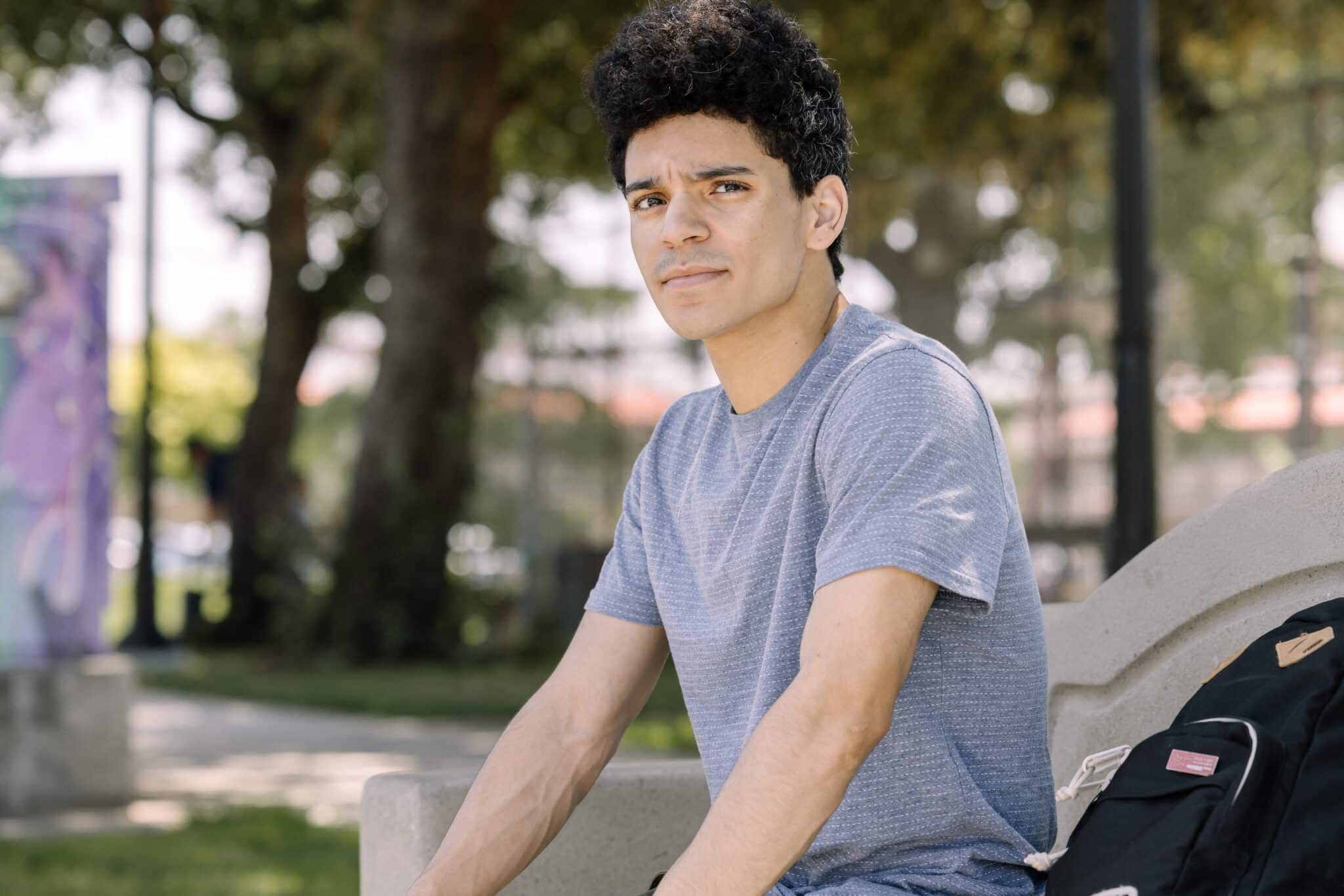Share
Systemic Trauma in Foster Care
It was the middle of the night, and police lights cast a flickering glow outside a home in crisis. Two elementary-aged children, hastily packing their belongings into a bag, were about to be taken into emergency custody. Their mother and her boyfriend sat in the back of a patrol car nearby.
The children, confused and frightened, were placed into the backseat of a social worker’s car, unsure of where they were going. The placement team was actively working to find an available home for them—if one could be found that night. Though the social worker reassured them they would be safe, the reality was stark: they had known this adult for less than an hour and were being asked to trust a stranger to take them to an unfamiliar place.
For thousands of children in the child welfare system, this scenario is not uncommon. In cases of domestic violence, substance abuse, neglect, or physical harm, state intervention is necessary to ensure a child’s safety. However, what is often overlooked is the secondary trauma that occurs within the foster care system itself—an experience known as systemic trauma.
What is often overlooked is the secondary trauma that occurs within the foster care system itself—an experience known as systemic trauma.
The Hidden Trauma of the Foster Care Process
The removal of a child from their home is rarely straightforward. Even when intervention is essential, the process itself can be deeply traumatic. According to the National Child Traumatic Stress Network (NCTSN), children in foster care often experience complex trauma, a term that describes both their experiences before entering the system and the distress caused by separation, instability, and uncertainty once in care.
Children placed into protective custody may experience:
- Being escorted from their homes by law enforcement and social workers, which can be intimidating, particularly for children who already associate police presence with negative experiences.
- Uncertainty about where they will sleep that night—whether in a foster home, a group home, or a temporary shelter.
- Separation from siblings, which is common when agencies struggle to place multiple children together due to age gaps or a lack of available foster homes.
- Disruptions to schooling, leading to concerns about falling behind academically or losing social connections.
- Feelings of guilt or responsibility, especially if they have acted as caregivers for younger siblings or have been conditioned to protect a parent from harm.
Research from the Administration for Children and Families (ACF) highlights that both acute and chronic stress, such as the upheaval caused by foster care placement, can significantly impact a child’s ability to develop self-regulation skills—the foundational ability to manage emotions, behaviors, and social interactions. Children who experience repeated disruptions in caregiving relationships, as is common in foster care, may struggle with heightened anxiety, withdrawal, and difficulty forming secure attachments due to an overactive stress-response system.
These early disruptions can have long-term consequences. ACF research suggests that prolonged exposure to chronic stressors, such as housing instability and caregiver turnover, can alter brain development, making it more difficult for foster youth to build healthy relationships, regulate emotions, and adapt to new environments. Without consistent, trauma-informed support, these effects can extend into adulthood, increasing the risk of mental health challenges, homelessness, and difficulty maintaining employment or long-term connections.
Understanding these developmental challenges is essential for foster agencies, caregivers, and advocates, who play a critical role in providing stability, emotional regulation strategies, and nurturing environments that help mitigate the impact of systemic trauma. By fostering predictability, security, and emotional support, caregivers can help youth develop resilience and rebuild trust in their relationships and future stability.
Addressing Systemic Trauma in Foster Care
While some level of distress is inevitable, intentional support and trauma-informed care can help lessen the impact of systemic trauma. Foster agencies, caregivers, and social workers play an integral role in minimizing unnecessary hardship.
1. Prioritizing Stable, Supportive Placements
When children entering care have a safe, welcoming home ready for them, it can make an enormous difference. Research from the American Academy of Pediatrics (AAP) shows that placement stability is one of the most significant factors in long-term emotional well-being for foster youth. Multiple moves within the system only compound trauma.
2. Keeping Sibling Groups Together Whenever Possible
Sibling bonds often provide the strongest sense of stability for children in care. Studies from the Journal of Child and Family Studies indicate that siblings placed together in foster care experience fewer behavioral challenges and higher overall emotional well-being than those separated. Whenever possible, agencies work to place siblings together or maintain frequent, meaningful contact.
3. Encouraging Trauma-Informed Foster Parenting
Foster parents serve as the frontline caregivers in the lives of children recovering from trauma. By providing predictability, emotional validation, and patient caregiving, foster families create environments where children feel safe enough to heal. Trauma-informed parenting training helps caregivers understand the neurobiological effects of trauma and how to support children through fear-based reactions, anxiety, and attachment difficulties.
4. Supporting Reunification Efforts When Safe and Possible
Reunification with biological parents remains the primary goal of foster care, provided it can be achieved safely and in the best interest of the child. According to data from the Administration for Children and Families (ACF), approximately 50-54% of children in California’s foster care system are reunified with their families each year. Successful reunification often requires comprehensive support, including mental health services, substance abuse treatment, and parenting education, to ensure that families can provide a stable and nurturing environment upon reunification.
Without proper resources, children may experience emotional fragmentation, struggling to adjust as they navigate between placements and biological family relationships. A well-supported reunification process—one that prioritizes trauma-informed care, parent-child bonding, and long-term stability—can help reduce reentry into the foster care system and promote healthy family reunification outcomes. Foster agencies, caregivers, and social workers play a key role in ensuring that families receive the tools and support necessary to make reunification a lasting success.
The Role of Foster Parents & Community Support
At the heart of these efforts are foster families—individuals who open their homes and hearts to provide temporary refuge and long-term impact. The presence of a stable, nurturing adult in a child’s life can mean the difference between prolonged distress and a chance to rebuild a sense of security.
Foster parents offer:
- A soft place to land when everything feels uncertain.
- Consistency, even when a child’s emotions are overwhelming.
- Encouragement for reunification, recognizing that a child’s strongest bond may still be with their biological parents.
- Advocacy for the child’s needs, whether in school, therapy, or social services.
Even for those who are not able to foster, there are countless ways to support the well-being of foster youth—from mentorship programs and volunteer opportunities to donations that support housing, education, and mental health resources.
The work being done at Orangewood Foundation’s foster family agency, Youth Connected Program (YCP), and partner agencies across Orange County is a testament to the belief that no child should have to navigate trauma alone. Through safe placements, dedicated foster families, and trauma-informed advocacy, the goal is not just intervention but healing and hope.
For more information on how to become a foster parent, volunteer, or support foster youth in need, contact [email protected].
Reducing Systemic Trauma, Rebuilding Trust in Foster Care
The trauma experienced before foster care is undeniable, but the trauma experienced within the system does not have to be inevitable. By acknowledging systemic trauma and actively working to reduce its impact, foster agencies, caregivers, and advocates can ensure that children in care receive more than just protection—they receive the stability, healing, and hope they deserve.
The trauma experienced before foster care is undeniable, but the trauma experienced within the system does not have to be inevitable.
At YCP and Orangewood Foundation, the mission remains clear: to walk alongside foster youth with compassion, consistency, and unwavering support—no matter how difficult the road ahead may be.






